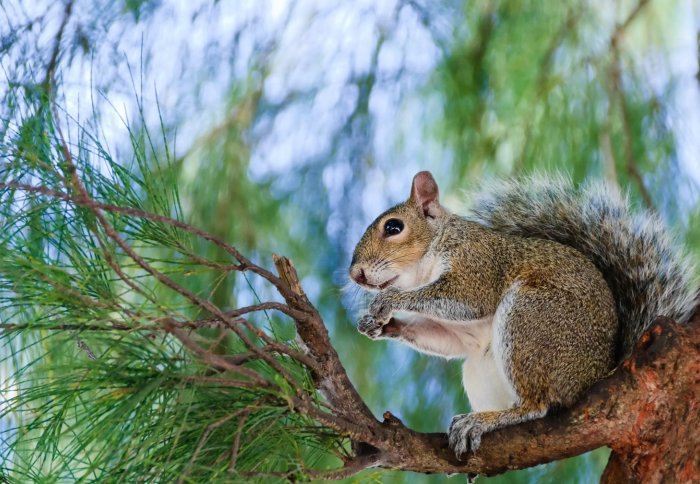Protecting mainland Europe from an invasion of grey squirrels

Genotyping of grey squirrels sampled from Italy and the UK shows a direct link between genetic diversity and their ability to invade new environments.
In this new study, published in Diversity and Distributions, an international team of scientists from Imperial College London and the Zoological Society of London compared 12 DNA markers from grey squirrels (Sciurus carolinensis) in Piedmont in Northern Italy with the same markers from squirrel populations in Northern Ireland, Northumberland and East Anglia.
After correlating genetic diversity against size of founding populations, the scientists have shown that if the number of squirrels in a founding group is low, then their genetic diversity is reduced, which in turn reduces their ability to invade new environments.
Italian grey squirrels are edging closer to the northern border and are perilously close to crossing the Alps. If the Italian populations interbreed, they will increase in genetic diversity, which will increase their chances of invading the rest of Europe
– Dr Lisa Signorile
Department of Life Sciences
Grey squirrels are an invasive species introduced from North America. While they are common throughout most of the UK and Ireland, on mainland Europe they are currently only found in Italy, where they mostly exist in discrete, but slowly expanding, populations. This new research has implications for preventing the spread of grey squirrels across the Alps into the rest of Europe where they would threaten native populations of red squirrels (Sciurus vulgaris).
Several of the grey squirrel introductions have been well documented, making it possible to correlate their spread today against the size of their original founding populations. For example, one of today’s Italian populations has spread from a deliberate introduction in 1948 by diplomat Giuseppe Casimiro Simonis Vallario. He took a shine to the ‘exotic’ animals while in Washington DC for meetings following the end of World War Two and brought back just four squirrels, which he released in the park near his Turin villa.
The small size of founding populations in Italy means that the spread of grey squirrels there has, until recently, been slow. But genetically distinct populations have now expanded to the point of merging, which would increase diversity and accelerate their ability to invade new environments.
Lead researcher Dr Lisa Signorile from the Department of Life Sciences at Imperial College London said: “Italian grey squirrels are edging closer to the northern border and are perilously close to crossing the Alps. If the Italian populations interbreed, they will increase in genetic diversity, which will increase their chances of invading the rest of Europe. To stop the spread, we need to understand what makes some populations such successful invaders. Our new study, which is the first to specifically examine grey squirrel population genetics at a large scale, helps us uncover some of those reasons.”
Grey squirrels are twice as heavy as red ones. They outcompete for food and have spread the deadly parapoxvirus, decimating native populations. These crippling colonisers are also changing the composition of British forests. By debarking trees, such as Garry Oaks, these invaders are a pesky problem for forest plantations, which take hundreds of years to cultivate and flourish.
Until now, scientists have focused on ecological and physical traits of grey squirrels, rather than investigating the genetics behind their invasive ‘triumphs’. In this study, scientists examined the genetic variation of 315 squirrels from 14 locations across Piedmont, Northern Ireland, Northumberland and East Anglia, and compared this against the original numbers of animals that were deliberately introduced.
Results showed arrivals of bigger grey squirrel groups, which were ten times as large in the East Anglia region as Italy, generated greater genetic diversity, allowing the population to adapt more easily to new environments and expand faster. By contrast, descendants from Vallario’s original population of four animals had the lowest genetic variability amongst all groups studied.
“The fact that today’s grey squirrel populations depend on the size of their founding population has important management implications,” says Lisa Signorile: “We need to find ways of helping Italian managers prevent breeding between genetically distinct populations.”
REFERENCE: Signorile, A.L. et al. 2014. ‘Do founder size, genetic diversity and structure influence rates of expansion of North American grey squirrels in Europe?’ Diversity and Distributions. 5 June 2014
Article text (excluding photos or graphics) © Imperial College London.
Photos and graphics subject to third party copyright used with permission or © Imperial College London.
Reporter
Press Office
Communications and Public Affairs
- Email: press.office@imperial.ac.uk
